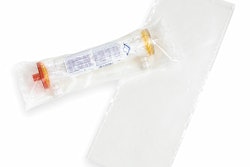Splish splash, beverage containers may be taking a bath in this Congress if clean water advocates have their way. A financial bath, that is.
A large coalition of drinking water and sewer trades, environmental, and other groups are set to promote a bill—as yet lacking a congressional sponsor—that would assess a 5¢ per container “consumption fee” on soft drink, beer, and water containers and bottles.
Most of the major drinks trade associations are unaware that the proposal is bubbling up. “That is news to me,” responds Beau Phillips, spokesman for the Beer Institute, when asked what he knows about the draft consumption fee.
This isn’t your mother’s old “bottle bill” where a consumer “hit” is meant to reduce litter and encourage recycling. Instead, this new push for a bottle bill has a brand-new rationale: to raise money for a new federal trust fund dedicated to construction of drinking water and sewer systems. Those systems, found in most communities in the country, are in many cases old, decrepit, and dilapidated.
Moreover, the federal Clean Water and Drinking State Revolving Funds, which live off annual congressional appropriations, are way too small to finance needed construction. While the gap between needs and expenditures has grown, congressional appropriations to the two revolving funds—which make loans to localities—have remained static or declined.
Jeff More, a lobbyist for the Accord Group, Washington, DC, is heading the coalition of groups currently looking for a sponsor for the draft legislation, the specifics of which he declines to share. However, the draft is based in part on an earlier proposal from the Assn. of Metropolitan Sewerage Agencies (AMSA) that aimed to raise $5 billion for the trust fund, which would coexist with the two State Revolving Funds.
Bridget B. Wells, spokeswoman for the Intl. Bottled Water Assn., Alexandria, VA, says the draft she has seen would raise $45 billion over five years.
Public support?
Federal trust funds to fund repair of infrastructure is nothing new, of course. The Highway Trust Fund depends on the gasoline tax. The Airport and Airway Trust Fund depends on airline ticket surcharges.
“Our polling of the public shows strong bipartisan support for a water trust fund,” explains More. “Seventy-five to 80 percent of people said they would back a dedicated trust fund for clean and safe water—a pretty high priority for Americans. Most Americans do not fly much. Yet we have an $8 billion a year Airport and Airway Trust Fund. But water touches people’s lives every day.”
He adds, “I think if the consuming public knew that a nickel on every bottle was going for clean and safe water in this country, they would probably be okay with it.”
But Nancy Stoner, an attorney for the Natural Resources Defense Council, says there are other funding options available besides a consumption fee on drink packaging. Still, the NRDC says it would support the fee.
There is considerable support in Congress for increasing federal funding for water infrastructure along with a realization that appropriations for the Clean Water and Drinking Water SRFs cannot be increased in the current budget climate. For the current fiscal 2005, the appropriation for the CWSRF was actually cut $250 million below its fiscal 2004 appropriation of $1.35 billion. The DWSRF got $850 million, a $5 million increase over 2004.
Way short of needs
But those totals are way short of what is needed. The Environmental Protection Agency conducts two surveys, every four years, of the states’ water and wastewater needs. According to the two most recent surveys for water (2001) and wastewater (2002), EPA estimates the nationwide demand for improvements to be $331 billion over 20 years.
There are also several independent analyses of the gap between what the nation as a whole currently spends on infrastructure and what the nation needs to spend. In 1999, the Water Infrastructure Network, a consortium of water and wastewater providers, researchers, environmentalists, engineers, and product manufacturers, released a study claiming the annual gap is $23 billion.
A bipartisan core in Congress understands the need for an initiative on water infrastructure. The passage of the Water Infrastructure Financing Act (S. 2550) by the Senate Environment and Public Works Committee last October was a testament to that. But while that bill made some significant changes to the SRFs, neither the full Senate nor the House passed the bill.
Nor did that legislation make any mention of a new trust fund, whose funding mechanism would have to be approved by the House Ways and Means and Senate Finance committees.
The beverage industry won’t be taking the prospective tax bath lying down. “[The Intl. Bottled Water Assn.] and other beverage industry representatives oppose being singled out for funding such a trust fund,” says Wells. “A beverage container tax is not the appropriate funding source for such an effort to improve the nation’s water and sewer infrastructure.”

























